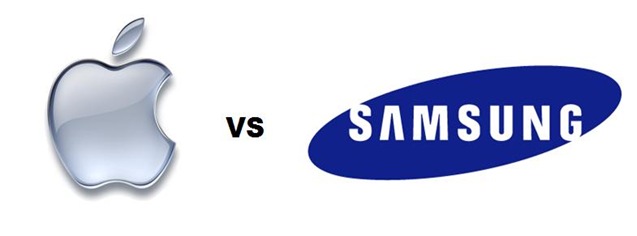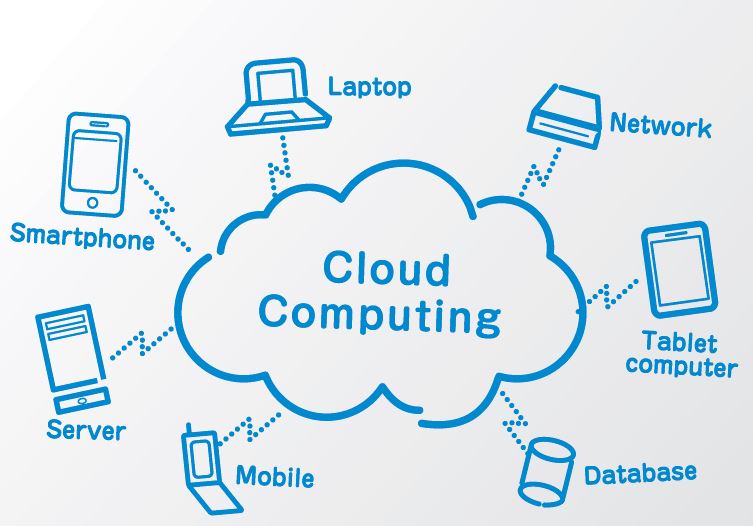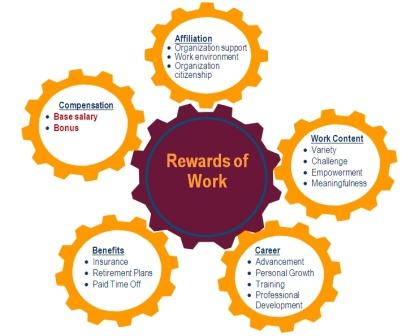Case Law on Apple versus Samsung – Patent Infringement
Title: Apple Samsung Lawsuits – Cornish, W., Llewelyn, G. I. D., & Aplin, T. (2013) Intellectual property: patents, copyright, trade marks & allied rights.
Patent infringement can be described as an act of making, selling, using or offering to set an invention that has been protected by government for the rights of inventor. In this report, a case of Apple vs. Samsung has been analyzed and discussed using critical understanding by referring the literature. In addition to this, supporting cases are also analyzed to provide understanding in the area of legal risk management. The report concludes that patent infringement cases are very critical and differ according to legal requirements of different countries. From the analysis of the case study, it was found that Apple and Samsung are going through a long lasting battle of patent infringement. Both have faced serious consequences of this battle due to different legal perspectives.
Case Summary and Analysis
Apple and Samsung are two technology giants have their number of lawsuits between each other relating to tablets and smart phone designs. This technology battle is very significant because these two companies contribute almost half of the smartphone market share across the world. The two parties which are claiming each other are two major technology giants Apple and Samsung. However, it Apple remained in winning position in most of the cases. A brief description of the two parties has been provided before discussing the main issues of the case in order to give introduction to these two companies.
About Parties
Apple Inc
Apple is an American multinational electronic company that is often characterized for offering best quality and innovative electronic products such as tablets, smartphones, laptops etc. It was founded in California, America in 1976 by Steve Jobs and since then, the company has placed it in number one position in hardware and electronic industry. Its products iPhone and iPads are considered as revolutionary innovation in the electronic world.
Samsung Group
Samsung group has five major business units including Samsung electronics company, Samsung telecoms etc. It is a South Korean multinational company that is comprised of number of subsidiaries and affiliated business organizations. The company was founded in 1938 by Lee Byung-chul and emerged as one of the largest electronics companies in the world.
Main Issue
Apple made the very first case against Samsung by suing it for four design patents on 5th January 2007. In response to the same, Samsung also filed a case against Apple for violating colour design patent of 193 screen shots of many iPhone graphical use cross points. Apple made a claim on its component provider Samsung in more than 10 countries including USA, South Korea, Germany, Australia, Netherlands, and Japan etc. Thus, the patent battle between Apple and Samsung has become an international case related to patent infringement. The key issue in this case is to identify if Samsung or Apple have infringed the patents of each other.
Apple has sued Samsung because the company is trying to protect its patent provided by the government for new invention. The issue has become more significant because Apple cannot protect all of its patents because technology is changing very frequently. In such a scenario, only specific features like “princh stretch” can be protected. Therefore, Apple won a court case against Samsung for $1.05 billion because of patent infringement by Samsung for copying a specific feature. Samsung also sued Apple for the same and won in few cases where it did not copy specific features. Both companies are major rivals in electronic industry and hold specific market share therefore, will never back down and accept that they were wrong. Thus, the battle is not going to end easily to the give case scenario.
What did Samsung Copy?
O’Rourke, M. (2011) Apple and Samsung Wage Patent War. Risk Management. 58(10). p.6.
Samsung had a basic production on tablets before Apple’s innovative product iPad launched. After launching of iPad 2, Samsung changed its designs of tablets and Google alleged Samsung to copy Apple’s iPad. The key design violations by Samsung are discussed here under:
| Violation 1 | Samsung infringed the design patent by introducing a feature of enlarging the text by double tapping on the screen. Thus, Samsung introduced the zooming feature that was being used by Apple in its iPads. |
| Violation 2 | Apple was the first company that offered a feature of bouncing back after scrolling. Samsung also violated this design patent in its smartphones. |
| Violation 3 | Ornament design was used by Apple in iPhone 3 that was used by Samsung for its future models. The shape of iPhone was rectangular in shape and the same was adopted by Samsung later. |
| Violation 4 | Samsung was also alleged to copy the shape and feature of icon alignment in a row or column that is a user friendly interface. Samsung can with the same interface that is used in android systems of Samsung. |
What did Apple copy?
In response to the above claims, Apple was also sued by Samsung because it was accused for using the same architecture design icons in iPhones which were used by the Samsung smartphones. Thus, Samsung electronics filed a lawsuit against Apple iPhone 5 which was released recently. Apple was accused to use the same features and GUI interface that was used by Samsung. Thus, Samsung alleged that Apple’s iPhone 5 shape is unreasonable rectangular shape which was copied by infringing the patents.
Federal Complaints in Court
Cusumano, M. A. (2013) The Apple-Samsung lawsuits. Communications of the ACM. 56(1). pp.28-31.
The following federal complaints were filed in the courts of various countries of which few lawsuits are stated below:
South Korea
The South Korea court revealed that Samsung was in fault for infringing patents by violating Apple’s design patents. Nonetheless, the court also awarded the little damages to both Apple and Samsung. South Korean court gave the judgement in neither of the parties by banning the products of Apple and Samsung in the country. Samsung was ordered to stop marketing its 12 products and Apple was asked to ban iPhone 3gs and iPad 1 and iPad 2 in South Korean market.
Japan
Samsung was sued by Apple for two patent infringements in the federal court of Japan but court denied to take any action. The court held that the technology used by these two companies was different and therefore, complaint filed by Apple was stroked down by them.
British Lawsuit
According to statement of British court, galaxy product of the Samsung was not copied and iPad and galaxy are products with different technologies. By this judgement, Apple lost the case against Samsung in United Kingdom as court held that there was no point to claim.
Australia
In federal court of Australia, Apple was a clear winner because on this case of patent infringement, Samsung was found guilty in legal grounds and ordered to ban galaxy tab in Australian market.
United States of America
The USA case against Samsung is considered significant in this battle because court clearly favoured Apple and held that Samsung copied the technology used in iPhones and iPads. Thus, all the tablets and smart phones of Samsung were banned in USA and court also imposed huge penalty on Samsung.
Problems in Finding References
During this study, I found issues in reading and finding related literature because of unauthorized access on some website. There are many premium website which allow user to get data only on subscription. Due to financial constraints, I had to find alternatives which was time consuming and difficult. Furthermore, the other issue I faced during finding references was identification of appropriate key words. Patent infringement is a wider term and there are all unique cases relating to this. Thus, it was difficult to identify supporting cases and references for the same. For this, I used rational approach and identified the list of patent infringement cases. Then, I used key words based on initial literature review to solve this issue. I have used enough literature to create better understanding on this case and analyze the same.

Analysis and Reflection on Legal Grounds
From the analysis of the given case study, it was found that both Apple and Samsung are in losing position due to this patent war. On the one hand, Samsung has to pay penalty of billions and on the other hand Apple lost its reputation in few countries. However, Samsung been biggest loser in this battle because there were serious financial and reputational implications.
Crampes, C., & Langinier, C. (2002) Litigation and settlement in patent infringement cases. RAND Journal of Economics. pp. 258-274.
The patent laws in USA provide for granting patents to any person/organization invented new, ornamental and original design for an article for manufacturer. The manufacturing items under the scope of patent law include smartphones, peripheral, software icons and other automobile parts. However, it is important to note that three types of patents are there but the scope of this law does not cover utility patent. However, the patent rights granted to Apple being an American country is confined to the territory of USA and thus, there will be no effect in other countries. Almost every nation has its own patent law and a person who wants protection of any kind of patent in any country is subject to laws applicable on that particular country regarding patent infringement.
Bosworth, D. L. (2014) Intellectual property rights. Elsevier
The above discussed case is not applicable for a single country because Apple and Samsung have entered into an international battle by suing each other in more than 10 countries for patent infringement. The law suggests that before determining the patent infringement, it is important to compare overall appearance of the accused design and the claimed design. It was found that Apple won the battle in some countries like USA but it also lost the case in some countries. The decisions made by different federal courts were based on their patent regulations and guidelines. Thus, it will not be wrong to state that both Apple and Samsung were not able to effectively protect their intellectual property rights and faced difficulty. On the basis of legal grounds and analysis, the cost of these actions of Apple and Samsung and future implications of the same are presented below:
Cost of These Actions
Wingfield, N. (2012) Jury awards $1 billion to Apple in Samsung patent case. The New York Times (August 24, 2012).
Apple had claimed federal complaint on its supplier Samsung in many countries whereas Samsung also filed the case on Apple for copying 5 patents of Samsung. The cost of taking these actions remained too high for these two organizations because finally, some of the products of these companies were banned in some countries that caused huge loss to reputation of Apple and Samsung. In addition to this, this billion dollar patent dispute between these Samsung has led one of the biggest losses due to penalties for patent violations in legal history ever.
Lawsuits Future Implications
Jeruss, S., Feldman, R., & Walker, J. H. (2012). The America Invents Act 500: Effects of Patent Monetization Entities on US Litigation.
There are serious implications of this legal battle that can be discussed in financial, reputational and market terms. Countries like South Korea banned some of the products of Apple and Samsung due to which the companies lost significant market share and reputation. Apple’s biggest competitor Google can re evaluate its product designs and strategies to protect itself from any legal action. The Apple remained in the strong position and therefore, it can become world’s most valuable company. Samsung lost the share value because of this patent battle that has made Apple to gain competitive advantage in long run.
Analysis and Conclusion on Other Case Studies
Innogenetics, N.V. v. Abbott Laboratories, 512 F.3d 1363 (Fed. Cir., 2008)
Innogenetics Biotechnology is a company that is dealing with diagnostics assays, multi parameter testing and in the field of severe infectious diseases whereas Abbott labs is a health care company involved in activities like discovering medicines and new technologies for well being of people. Innogenetics was provided patent for the method of detecting a particular disease which was copied by Abbott labs. Innogenetics won $7 million against Abbott for infringement of patent. Although, Abbott gave an argument that the technology used was a raising technology. Court gave the judgement on the grounds that applicant is not required to convince specification. The technology was already known earlier therefore, innogenetics won the case. However, Innogenetics succeed in protecting the right to offer injunction in the market. From the analysis of the case study, it can be stated that Abbott was not able to defend itself on justifiable grounds because of pre existence of the technology.
Microsoft Corp. v. Motorola, Inc. (Fed. Cir., 2014)
The case of patent infringement was initially filed by Microsoft Inc. against Motorola in the District Court of Washington in year 2012. The reason for the claim was that Motorola was alleged to violate reasonable and non discriminatory agreement. During this US litigation, Motorola sued Microsoft in Germany for patent infringement. However, the patent battle has come to an end and the jury has ruled the case in favour of Microsoft and awarding the company $15 million in damages. The judgement was based on the argument that Motorola has breached the US agreement. From the analysis of the case study, it can be said that patent infringement cases are very complex to make decision because there is a thin line between current and new technology.
Conclusion
In this report, the case of Apple vs. Samsung has been analyzed using the existing literature including supportive cases and legal guidelines. It can be concluded that every country has its own regulation on patent protection. In the technological field, patent infringement cases are very common whether they are related to design, utility or knowledge. Thus, it is important to review each and every aspect of the case for taking the judgement. Legal application can be confined to a single territory in most of the cases therefore, before launching a product companies should ensure that no such legal agreements are breached. It can also be commented that patent cannot be considered as a right option all the time because in the case of infringement, the final decision takes a pretty long time. By the time, when decision is taken, technology may have reached the window of opportunity could have closed for patent owner that happened with Apple. However, the typical outcomes could be monetary damages, exclusion order, mediation, injunction relief and negotiated settlement.
Bibliography
Bosworth, D. L. (2014). Intellectual property rights and Lawsuits. Elsevier.
Cornish, W., Llewelyn, G. I. D., & Aplin, T. (2013) Intellectual property: Lawsuits patents, copyright, trade marks & allied rights.
Crampes, C., & Langinier, C. (2002) Litigation, lawsuits and settlement in patent infringement cases. RAND Journal of Economics. pp. 258-274.
Cusumano, M. A. (2013) The Apple-Samsung lawsuits. Communications of the ACM, 56(1). pp.28-31.
Innogenetics, N.V. v. Abbott Laboratories, Lawsuits 512 F.3d 1363 (Fed. Cir., 2008)
Jeruss, S., Feldman, R., & Walker, J. H. (2012) The America Invents Act 500: Effects of Patent Monetization Entities on US Litigation.
Microsoft Corp. v. Motorola, Inc. Lawsuits (Fed. Cir., 2014)
O’Rourke, M. (2011) Apple and Samsung Wage Lawsuits and Patent War. Risk Management. 58(10), 6.
Wingfield, N. (2012) Jury awards $1 billion to Apple in Samsung patent case Lawsuits . The New York Times (August 24, 2012)




